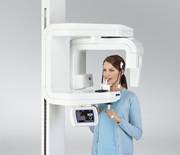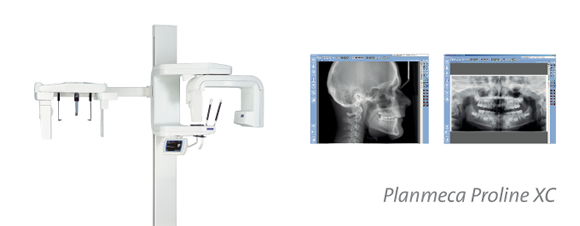Panoramic X-Rays Show Dentists the “Big Picture”
 Dental X-rays, also called radiographs, are an important tool for the dentist. The three most common types of dental X-rays are the bitewing, periapical and panoramic X-rays. Bitewing X-rays are those that are taken during most routine dental check-ups and are useful for revealing cavities between the teeth. Periapical X-rays show the entire tooth, including the roots, as well as the bone surrounding them.
Dental X-rays, also called radiographs, are an important tool for the dentist. The three most common types of dental X-rays are the bitewing, periapical and panoramic X-rays. Bitewing X-rays are those that are taken during most routine dental check-ups and are useful for revealing cavities between the teeth. Periapical X-rays show the entire tooth, including the roots, as well as the bone surrounding them.
These X-rays are useful in helping to diagnose an abscessed tooth as well as periodontal (gum) disease. The third type of X-ray commonly used in dentistry — the panoramic X-ray — gives a broad overview of the entire mouth. This X-ray supplies information about the teeth, upper and lower jawbone, sinuses, and other hard and soft tissues of the head and neck.

One advantage of the panoramic X-ray is its ease of use. Unlike other X-rays where the film is placed inside the patient’s mouth, the panoramic film is contained in a machine that moves around the patient’s head. Some people may be familiar with the panoramic X-ray because it is usually taken when the wisdom teeth are being evaluated. The X-ray will also reveal deep cavities and gum disease, but it is not as precise as bitewing or periapical X-rays.
 The panoramic X-ray has many other applications, including evaluating patients with past or present TMJ (tempro – mandibular joint) or jaw joint problems; those who require full or partial removable dentures, dental implants, or braces; those who are at risk or suspected of having oral cancer or other tumors of the jaw, have impacted teeth (especially wisdom teeth) or have had any recent trauma to the face or teeth (e.g., can help identify a fractured jaw); and for those who cannot tolerate other types of films (severe gaggers).
The panoramic X-ray has many other applications, including evaluating patients with past or present TMJ (tempro – mandibular joint) or jaw joint problems; those who require full or partial removable dentures, dental implants, or braces; those who are at risk or suspected of having oral cancer or other tumors of the jaw, have impacted teeth (especially wisdom teeth) or have had any recent trauma to the face or teeth (e.g., can help identify a fractured jaw); and for those who cannot tolerate other types of films (severe gaggers).
The panoramic X-ray is an important part of a thorough dental examination. I usually recommend a panoramic X-ray once every five to seven years for most patients. Although the panoramic X-ray does not provide as much detail when evaluating the teeth and gums as other dental X-rays, it can pick-up potential problems that the other X-rays cannot.



